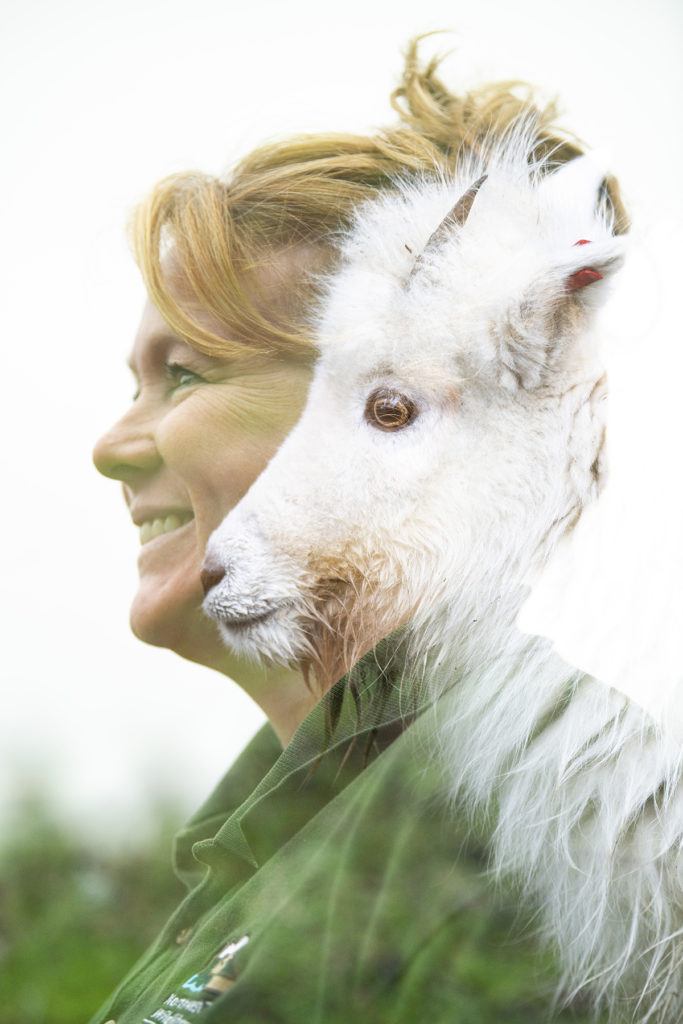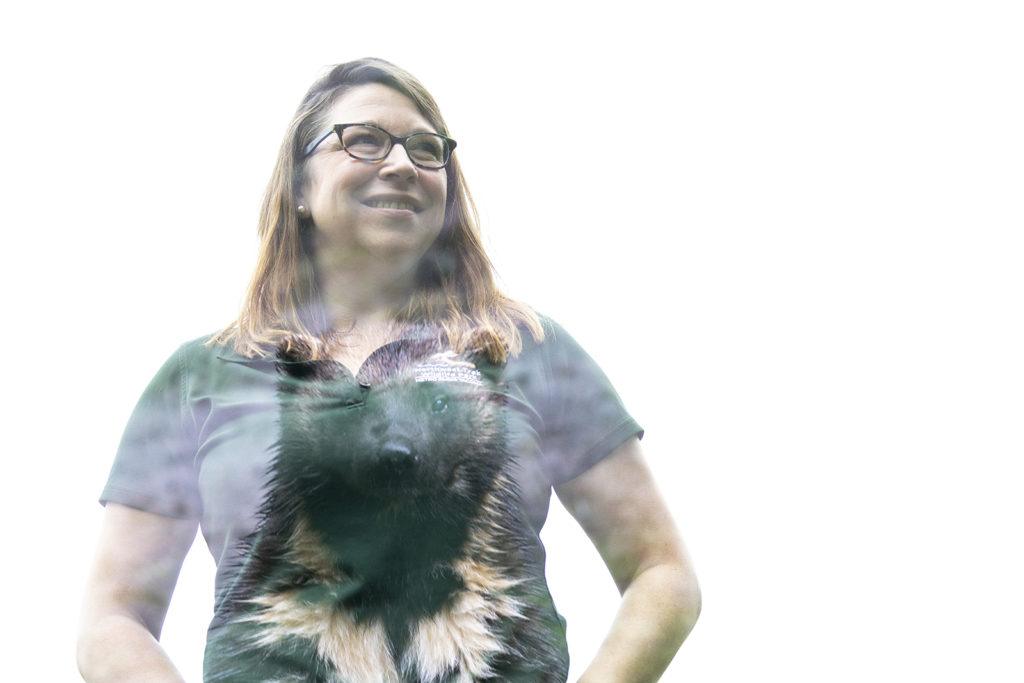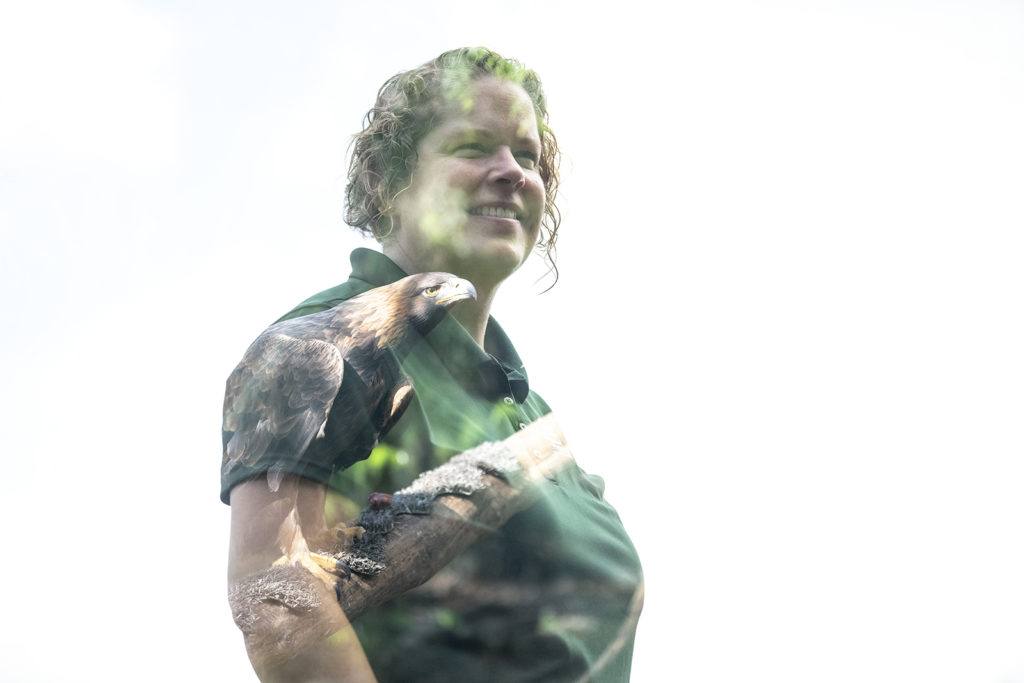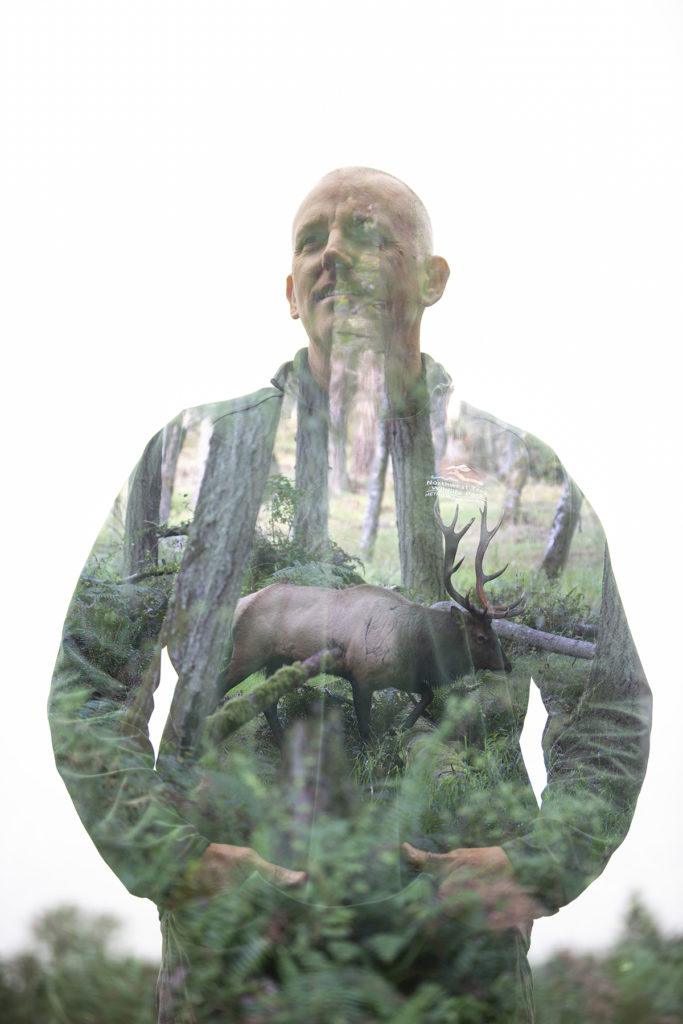Zookeepers and the animals they love
What’s the animal you feel most deeply inside? The one you connect with, love, relate to, share traits with?
For National Zookeeper Week 2021, we asked our longest-tenured keepers that very same question. Then our incredible staff photographer Katie Cotterill took portraits of both keeper AND animal, superimposing them in her camera as a double-exposure shot. The results are magic.
(Curious about how she did it? Scroll to the bottom to find out.)
Deanna, with Ellinor the mountain goat

Miranda, with Ahma the wolverine

Wendi, with Yakima the golden eagle

Dave, with bull elk

HOW DID KATIE CREATE THESE PHOTOS?
Double-exposure shots are tricky. They have to be planned, but can’t really be edited – this isn’t a Photoshop trick. Katie explains the magic:
“You can do these a couple of different ways, though not on all cameras. I use a Nikon D850 DSLR camera, selecting “Image Overlay” in the Retouch menu. Within the camera, I choose the first RAW photo, then the one to be superimposed. I can balance the transparency ratio – which image is more prominent, or if they’re equal. Afterwards I only computer-edit for color correction, and maybe crop a little.
“The trick is lining up the two shots so they work with each other. First, the contrast: On the first image (the keeper portrait), the bright parts will cover up the images in the second shot (the animal image). So I shot all the portraits against a blank sky background. (One of the few times our white-gray Pacific Northwest sky is useful! If the sky is too blue, it’s harder to find that exposure balance.) Then you need to contrast the subjects – the white goat fur was perfect against Deanna’s face, for instance.
“Next you have to line up the position of the images within the frame, so the subject of the second shot (the animal) goes on the darker part of the first shot. Animals are so unpredictable, so I used Image Overlay rather than Multiple Exposure, as it would let me select from other photos. Then I tried different image combinations to see what worked best. Some were difficult, like an owl that made the keeper’s skin look feathery. We ended up choosing another animal.
“Finally, there’s the artistry part. I wanted a photo that captured how these keepers felt about their animals, that deep connection. I loved the way Marc’s image turned out, the kelp and sheephead fish swimming almost abstractly across his face. And I chose a real background – sky and scenery – instead of a studio one, because I liked the realness of it, the imperfection of a treeline at the bottom of some of the frames.
“I’m really proud of these photos. This is the first time I’ve tried this technique, and some took a long time to get right. But I’m happy with them, and would do it again.” – Katie Cotterill